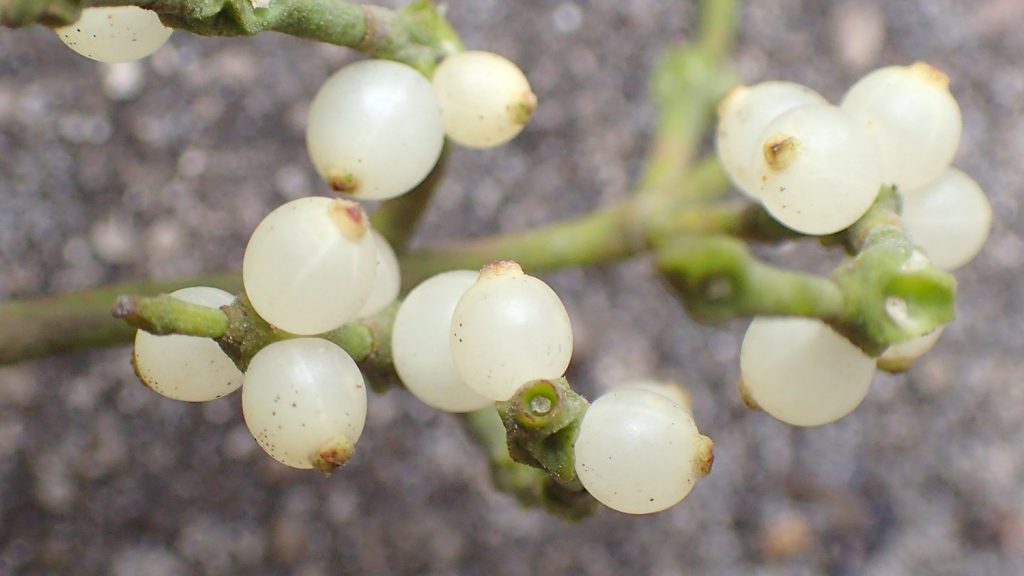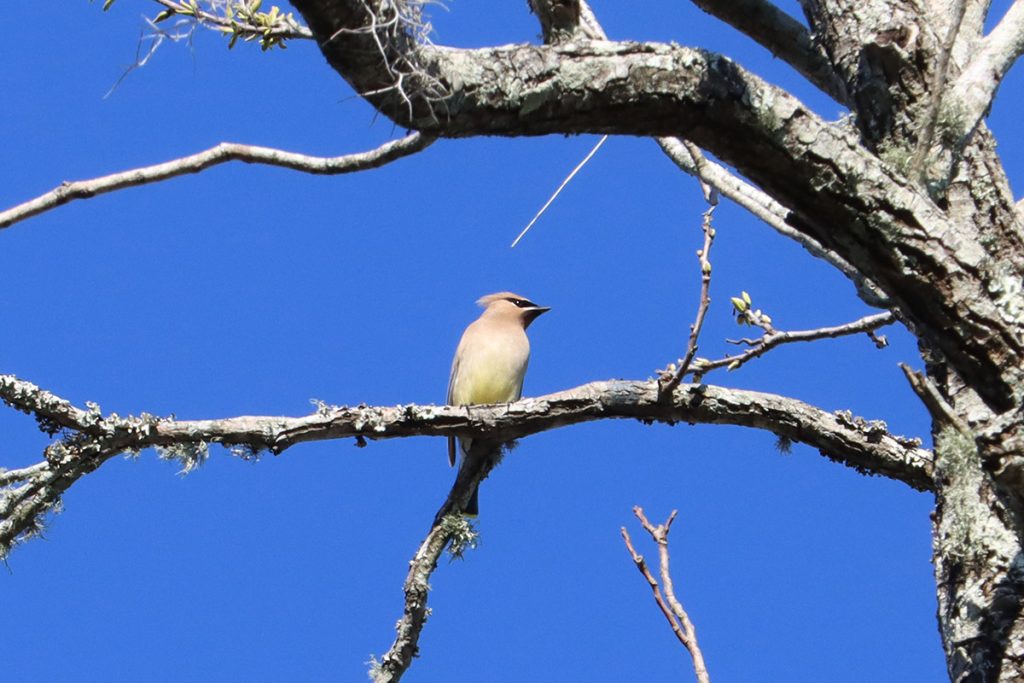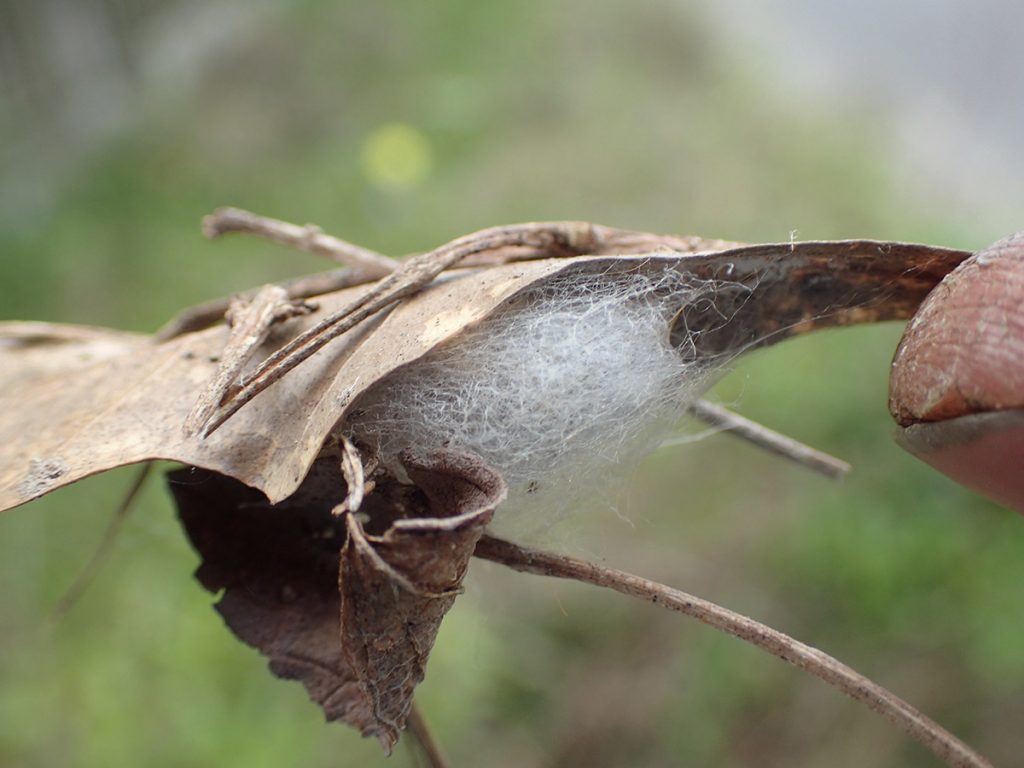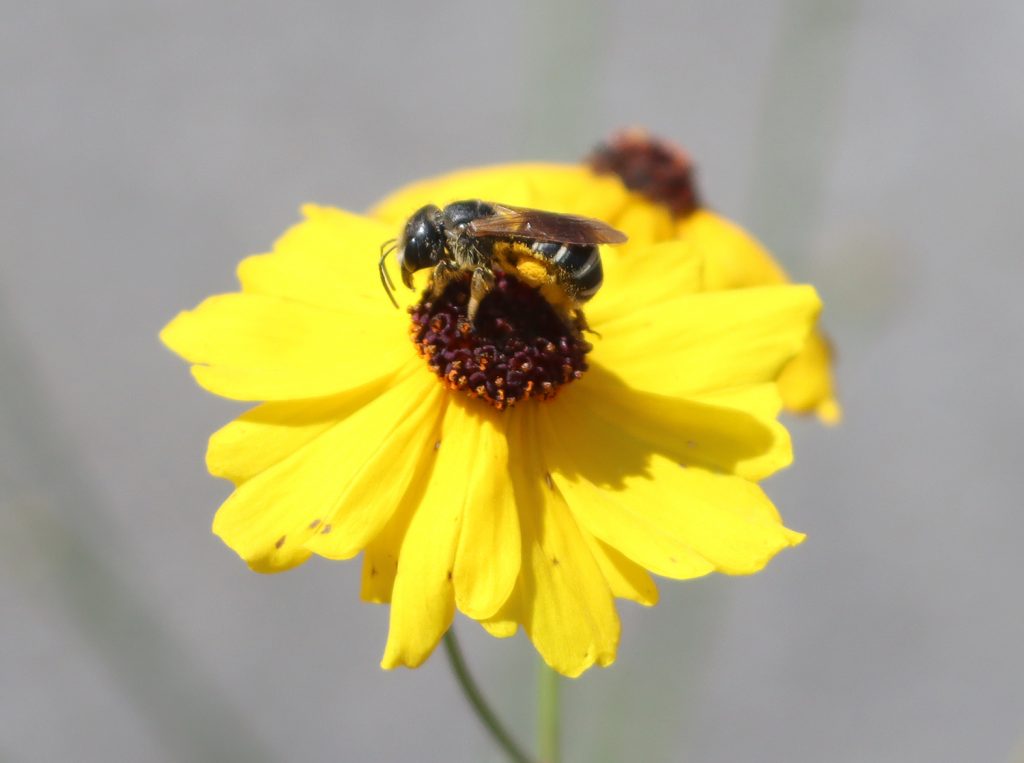My Year in Bugs: the 2022 Backyard Blog - blog.wfsu.org
After four years of taking photos and writing about insects in my yard, I called it quits. I was in the middle of a large project as 2022 approached, and anyway, I see a lot of the same insects every year. That didn't mean I would stop taking photos, but maybe I didn't need to take the time to organize and write about them.
There would be no 2022 Bug Blog.
I underestimated my yard. Space opened up in 2021, and I installed a large new pollinator space. The yard became a richer space, a more diverse space. It drew me in with new visitors, and stories unfolded before my eyes. Once the small things have your attention, you're in their world. They are hunters and they are hunted, and they all need to seek a mate.
With the changing of seasons, storylines resolve or evolve. Many of our characters change, and they have a flair for the unexpected. I make it sound dramatic, and it can be. But observing insects pays off in more than sex and death.
Why do I Bug Blog?
- For one thing, it's a seasonal record. Five years in, we see when different wildflowers started to bloom, when different bees started visiting. And when did monarchs start passing through this year? It's phenological information, and I like having that record.
- If you pay enough attention, you observe different plant and animal behaviors. Some are subtle things, and, yes, some are choc full of sex and death. It's all part of the process of learning about our backyard ecosystems.
- And then, yes, I do see new critters and even new native plants popping in as weeds. If you treat it like an ecosystem, it will always surprise you.
So let's jump right in. The record will be a little more sparse at the beginning of the year, when I was focused on Bee in My Garden Days (bees are, of course, well represented). Also, there are less insects to observe in the winter months. It starts picking up when I started noticing too many things I couldn't not photograph.
January 4, 2022- mistletoe falls

Every year around this time, a chunk of mistletoe falls from the pecan tree. The plant is only a minor parasite to its host tree, and it has wildlife value. For one, its berries feed birds.

And here are its flowers. They look like barnacles. I have a special appreciation for the flowers that don't look like flowers.
In December of 2020 when the mistletoe fell, I found some true bug nymphs on it. They were possibly plant eating leaf-footed bugs, but another possibility is that they were assassin bugs. They look so similar at that stage. We did find assassin bug eggs while filming our segment on mistletoe in 2019.
January 18, 2022

The temperatures dipped below freezing last night, and yet here's a flying insect. Well, today, a walking insect. I've noticed paper wasps perusing leaves after it's too cold for other pollinators. They seem to be fairly cold tolerant, perhaps taking advantage of this to find hibernating insects to bring back to the nest for their larvae to feed on.
January 26, 2022- a winter visitor

Before I became obsessed with insects, I observed birds. Insects did not replace birds, just as plants did not replace insects. My interest in plants came from insects, which eat and pollinate them. Learning plants helped me understand insects, both of which are of the world of birds.
I haven't seen chipping sparrows in the yard since 2018 or '19. This cute little winter migratory bird is a common visitor to a backyard feeder.
February 19, 2022

Perhaps the most common winter visitor to the yard, and commonly seen around the area during colder months.
February 28, 2022- The first bees of the year
Not thinking about collecting photos for a bug blog, I shot video of this mining bee (Andrena) pollinating a cherry laurel flower. Mining bees are some of the first native bees we see in our area. I had also been seeing carpenter bees flying to and from our fence posts, where they nest, and occasionally meeting while in flight. This is when they emerge, find nectar, and mate.
Back to those mining bees. Because they fly so early in the year, they rely on trees and shrubs, which bloom when mining bees are in flight. By April, they will return to the ground nests for the year.
March 2, 2022

Eastern redbuds are an early blooming understory tree. Here, it has snuck in amongst native cherry trees, where it almost escaped notice before flowering. This is an important tree for early flying bees.

Dewberry can be weedy, crawling over the ground and crowding out other plants. And it is thorny. At this time of year, it redeems itself, producing copious amounts of white flowers for honeybees and other pollinators out and about now. It will soon produce fruit for birds and mammals, and I guess humans as well.

And here's another mining bee.
March 3, 2022- Luna moth

The real reward of observing insects in the yard all year long is learning the stories of all the different, often ignored, creepy crawlies. I'm talking about the parasitoid breeders whose larvae devour other insects from within. The decomposers who turn leaves and wood to soil. And all the various hunters who often eat the pretty little insects I like, but also aphids.
The Bug Blog exists to celebrate the unappreciated insects.
But who isn't happy to see a luna moth hanging around in a conspicuous place during daylight hours?

In the morning…

That morning, I watched as a bee searched the ground. Perhaps it was looking for a place to nest. In the spring, females of many bee species emerge from a sort of hibernation to make their nests. They will usually have mated in the fall, carrying the next year's brood within them.
This bee looked a little like a bumblebee, but from this no-so-great-photo, I can see that it has a smooth abdomen. It's a little small for a carpenter bee (another similar looking bee with a smooth abdomen), and those nest in wood. I lost it among the spiderwort, hoping to see it again.
March 3, 2022

As happens in some years, these caterpillars were everywhere as winter turned to spring. In the previous spring, a moth laid a couple hundred eggs, likely up in a cherry tree. Then, a week or two before this photo, they hatched, began to feed, and created a silk tent around the lot of them.
They leave the tent to feed, which is when we see them wandering.
March 14, 2022- small flowers in full force

Trees and shrubs have been blooming for weeks now, providing nectar for early flying bees. In our yard we've already seen Carolina cherry laurels and redbuds. By March 14, as spring approaches, many small flowers start to emerge. Many of these are weeds- welcome, native species. This is why I work to identify every plant that sprouts in the yard. If you let your yard do its thing, a lot of what grows is not native, and then a lot of it is.
These are natives you might never see in a nursery, but that add some diversity and, often, nectar sources to your yard. They are splashes of color in an overgrown lawn.
The flower above is not a weed, though it has a reputation for spreading in a yard. A couple of years ago, I bought two species of Sisyrinchium, both blue and purple eyed grasses.

These bloom profusely in the spring, with an echo in the early fall. Like many of the small flowers I see at this time of year, they are visited by small bees and hoverflies.

Another tiny flower. The name cranesbill refers to the pointed seedhead it will later produce, which I've seen squirrels eat. Starting in November, you might see parsley-like leaves emerging in your yard. It could be this native geranium, which will bloom by March.

We had much more of these flowers in 2022 than we did in 2021.

This is a native Apiaceae, or carrot family plant. Like many of the weeds on this list, it'll be totally gone by the end of spring.

We have a patch of our yard that, for a few weeks, blooms pink with betony in the spring.

Not a weed, though it spreads like one, this is a wildflower I started from seed. From those first plants, years ago, more followed. When our two species of Coreopsis start to flower, pollinator season starts to take off in our yard.
March 21, 2022

Last year, cedar waxwings and robins ran rampant through through our neighborhood, and regularly mobbed our cherry laurels. Not so much this year. You can see that the pecan tree is starting to leaf out again; soon, these winter visitors will depart, and spring will begin in earnest.
March 29, 2022

Carpenter bees were the first bees I saw flying this year, just ahead of mining bees. But I never thought to stalk them coming and going from their nests, and until the horsemint blooms in August, I don't see them on many flowers. Here is one visiting our Meyer lemon tree.
April 1, 2022- first monarch sighting

This monarch was passing through, stopping for nectar but not to lay eggs on our milkweed. The migration has started.
April 5, 2022

Shame on me for walking the garden without a camera. I'd seen this bee a few times visiting our blueberry flowers, but only now, after the flowers had mostly started to turn to berries, did I catch it on a different plant. This bee is known as a specialist, but it's obviously not too specialized.

Here's another look. It's a new species for the yard, and the bee I saw searching for a nest a couple weeks before. Here it is on a busted open vetch seed pod. Common vetch is not native, but it only lasts through the spring, and it fixes nitrogen in the soil. It dies off right as many other plants are starting to grow and flower, taking advantage of the soil it enriches. So I leave it.

The Coreopsis has started flowering. We're still not seeing many pollinators, but other insects are starting to fly.

I haven't found out much about this insect, but crane fly larvae are known to eat the roots of plants after their mothers lay eggs in soil.
April 17, 2022

I've been looking more at the seasonality charts for different species in iNaturalist. It displays observations based on month of the year, and some species have a more specific seasonality than others. The white marked tussock moth peaks in April, though it is observed throughout the summer.
Using iNaturalist as a garden tool
I mention iNaturalist so often and sometimes forget that some readers don't know what that is. iNaturalist is a free app that helps identify plants, animals, mushrooms- basically, anything that lives. It scans your photos and offers you suggestions. Other users, including biologists, confirm your identification or suggest a new one.
The app also collects data from user observations. You can get an idea of the range of a species by looking at a map of observations, and can see the observations plotted over time. I use the app as a garden tool. Identifying whether weeds are natives of nonnatives, I make decisions on who stays or goes. And it's a main way I learn about insects in the yard.
April 21, 2202

There was a time when I would rush to counteract these aphids attacking the first of my tomato flowers. Since I've started my insect photographing mission, though, I've learned a few things about the predators in my yard. Between hoverflies, long-legged flies, and lady beetles (though most of ours are invasive Asian lady beetles), aphids have a natural check in our yard.
I used to think the white aphid bodies alongside the living aphids were corpses. These are aphid molts. Like all insect larvae, they need to shed their exoskeletons before continuing to grow into their adult form.
I do worry when I see aphids on fruit flowers, but these were soon taken care of. The biggest impediment to a bountiful tomato crop was to be impending dry spells.
April 27, 2022

The first thing I notice in this photo is my grody gardening fingertip. The darkness under my fingernail speaks to a morning well spent.
I should spend more time turning over leaves and seeing what scurries out, or has sought shelter as it transitions between life stages. Earlier in the year we find moth cocoons of various shapes and sizes, and then as it gets warmer, we see more adult moths flying out. As April turned to May, I was straightening out a part of the yard and clearing out leaves.

Googling "white fuzzy moth cocoon," I see this resembles a tussock moth cocoon, about ten days after seeing a tussock moth caterpillar.
May 3, 2022- Bee season begins

Yes, we've been seeing bees for a few months by now. But two of those were early flying species; both the blueberry digger bee and the mining bees are through flying for the year. We've had carpenter bees since February, but bumblebees have been mysteriously absent from the yard so far.
On this day, I saw our first Poey's furrow bee taking advantage of all the Coreopsis flowers that have started to bloom. This is a common bee for our yard, and it's usually around through the start of fall.

We had two species of Coreopsis flowering in early May. Lance-leaved Coreopsis has larger, prettier flowers than Leavenworth's, but it makes far fewer flowers. The blooms last a few days and die off, and sometimes plants lie flowerless for stretches. And when a hot or dry stretch hits, the plants mostly quit making flowers for the year. At least, that's how they behave in our yard. Leavenworth's are more reliable.

